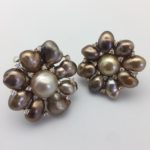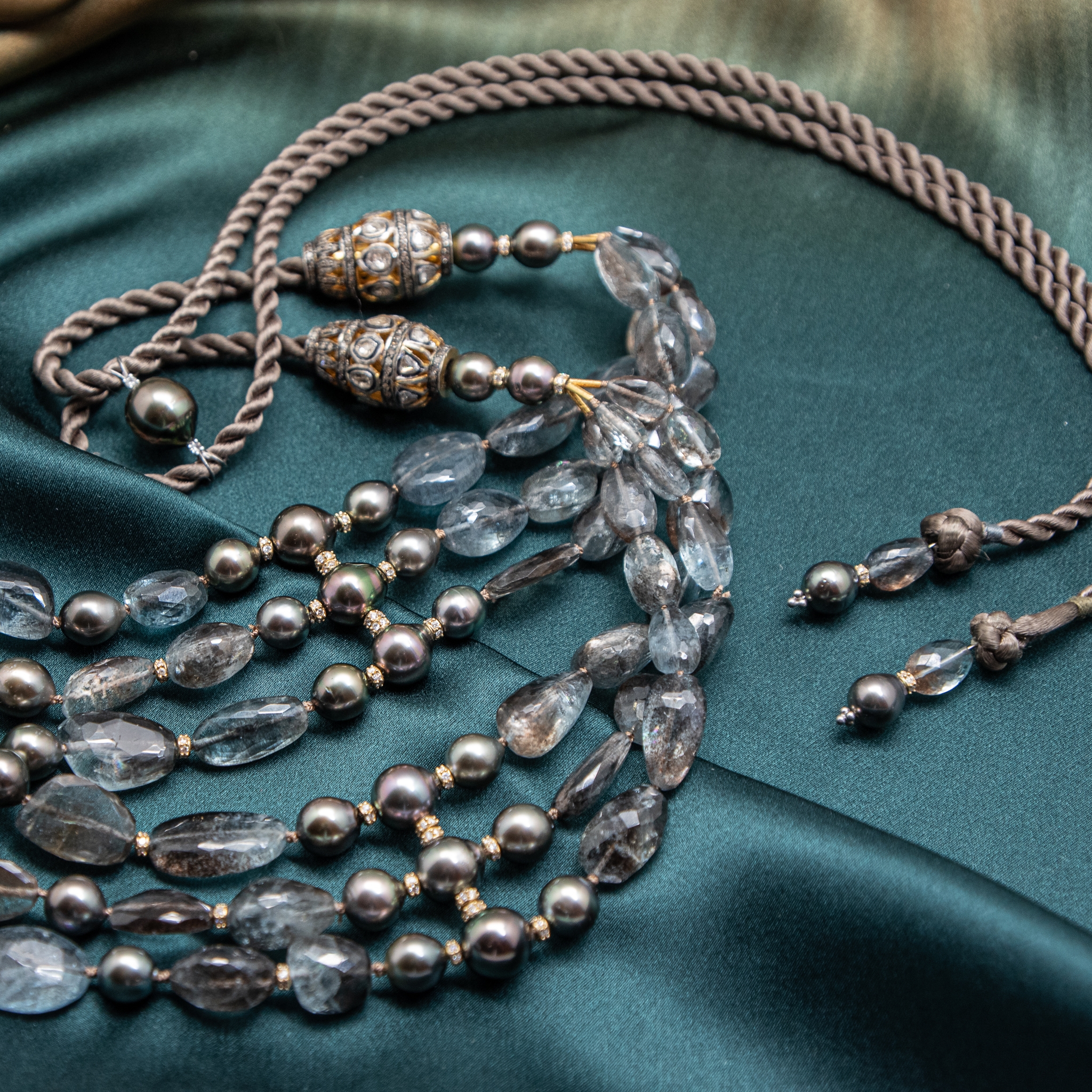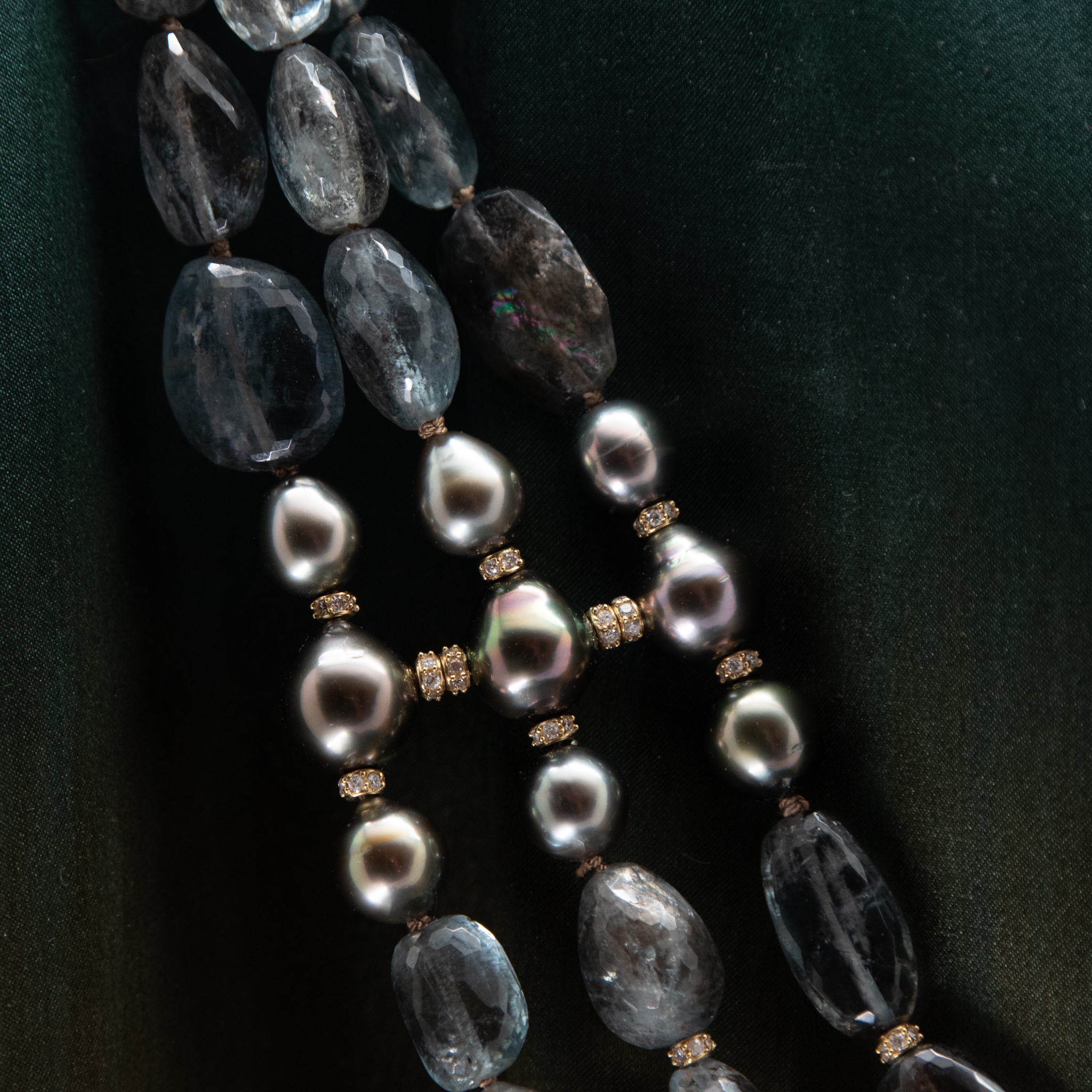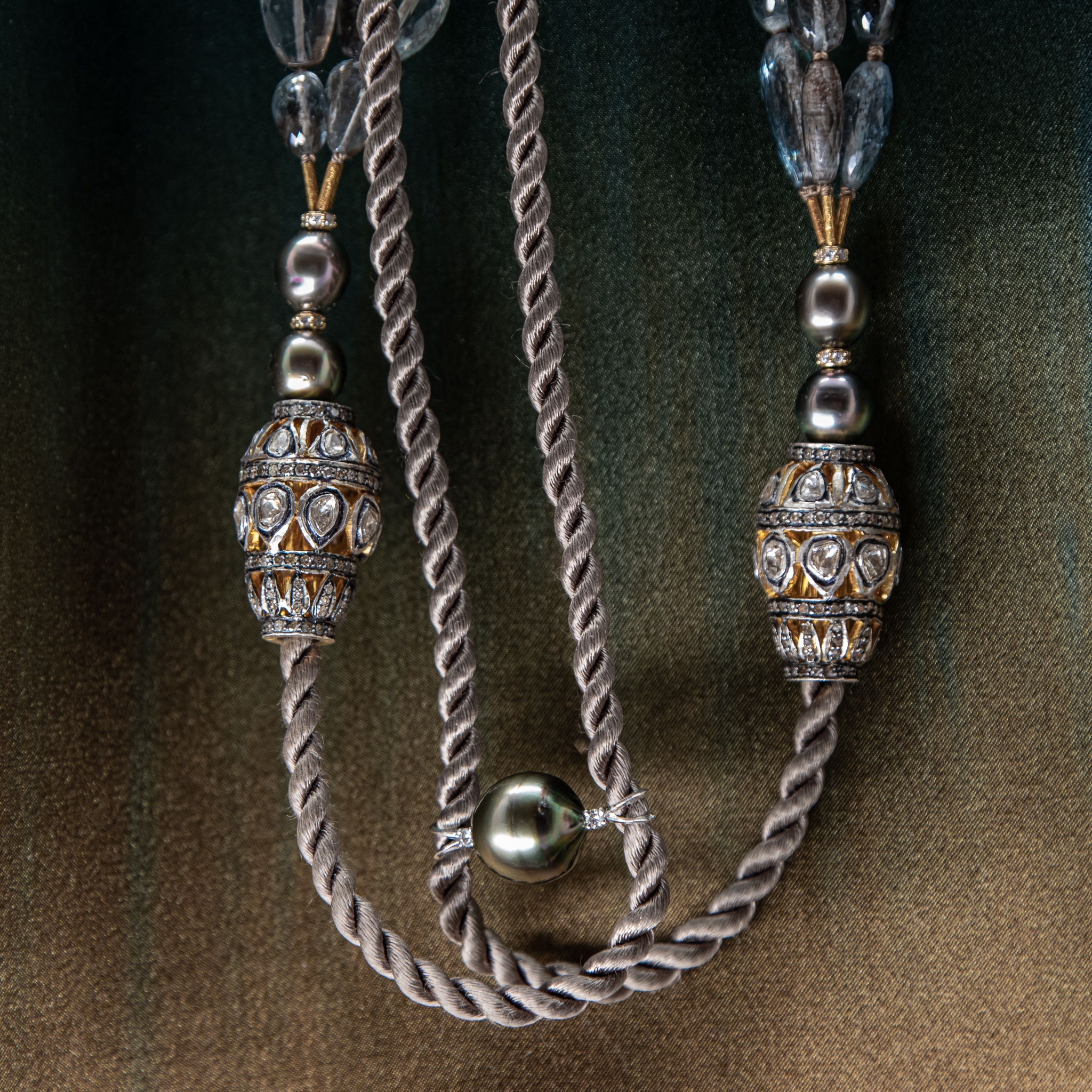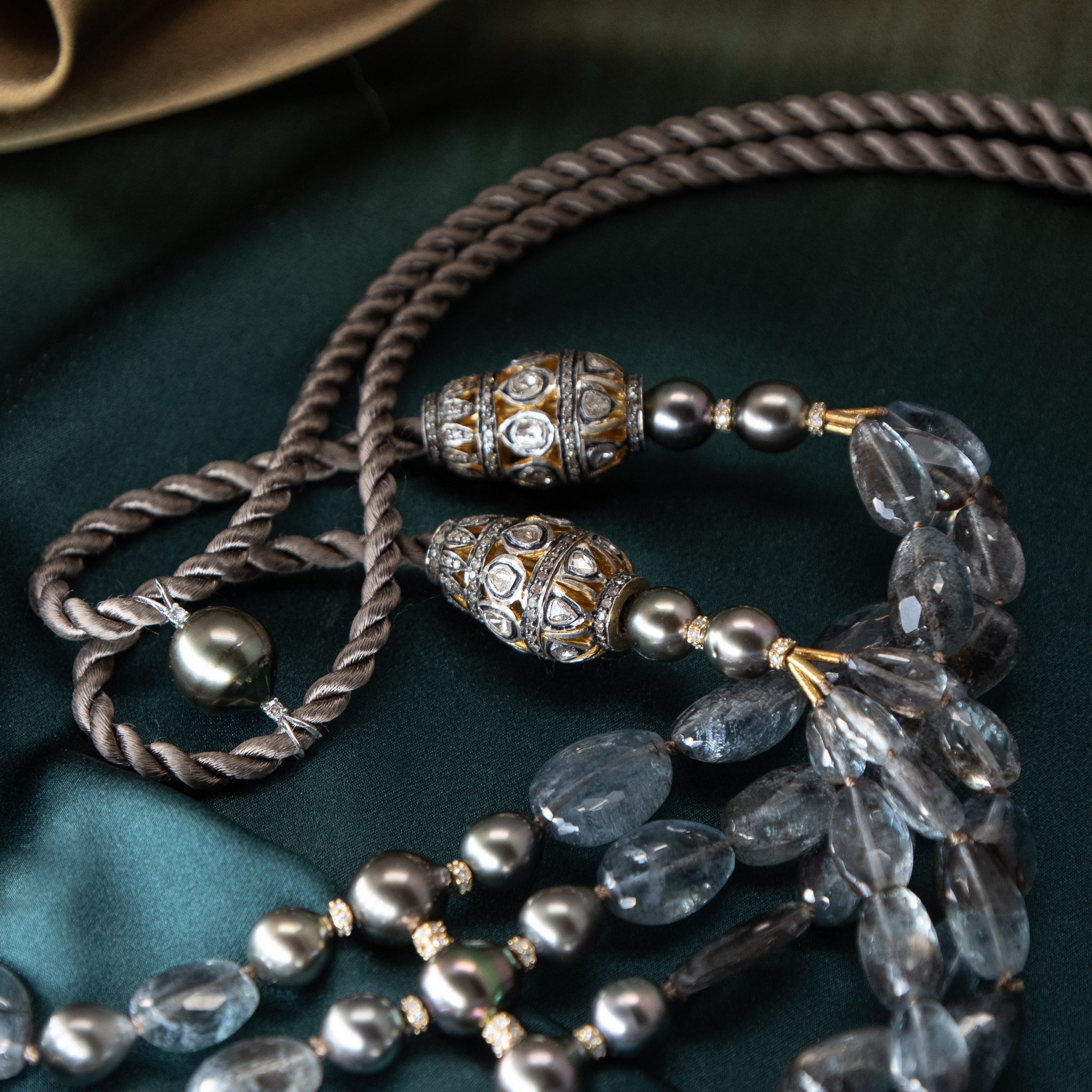Tahitian Pearl and Moss Aquamarine Three-Strand Statement Necklace
Dive right in to the depths of the Blue Lagoon, where precious Tahitian pearls meet watery aquamarines in a truly spectacular three-strand statement necklace. Unusual copper infused moss aquamarine nuggets possess a unique play of color that are enhanced by peacock hued Tahitian pearls and plenty of 18K gold and diamond accents. This hand-knotted beauty is finished with large sterling and diamond India beads and silky cords that are adjusted by a Tahitian pearl slide. Come on in, the water is fine!
designer: atelier bento
details:
- necklace length: 24-36 inches, adjustable
- stone: moss aquamarine with copper inclusions
- stone weight: 900 carats
- stone treatments: none
- pearls: Tahitian, semi baroque, peacock gray
- pearl quality: AAA
- pearl lustre: excellent
- pearl weight: 12.5 momme, 235 carats
- gold content: 18K
- gold bead source: India
- marks: bento
$8900
N 00037
availability: one-of-a-kind
CONTACT: 520-906-7187
about Tahitian Pearls:
Exotic black pearls from the Pinctada margaritifera or Black-lip pearl oyster, are more commonly known as Tahitian pearls. These pearls are often referred to as black, but have a remarkable color range that covers the spectrum - from light, creamy white and grey, to regal greens, iridescent peacock and deep black. Tahitian pearls are relative newcomers to the pearl world, popularized only as early as the mid-1970's by the efforts of Jean Claude Brouillet, Salvador Assael, Robert Wan and others.
Unlike the more common pearl types, Tahitian pearls typically have a naturally dark body color. These pearls have become some of the most sought-after, expensive pearls in the world. Because of their vast color range, matching these pearls into a finished strand is an enormous task requiring thousands of loose pearls to create a single strand.
Tahitian pearls are considered to be the second most valuable commercially farmed pearls in the world. Tahitians come by their dark nacre color naturally. Tahitian pearls are bead-nucleated, but unlike akoya pearls, the nacre is typically very thick. The thinnest nacre allowed by French Polynesian law for export is 0.8 mm, which is a depth that would be considered, in the Akoya world, extremely thick.
Cultured Tahitian Pearls debuted in the early 1970's and have become the iconic "Black Pearl" of the black lipped pearl oyster Pinctada margaritifera cultivated in French Polynesia. These pearls actually exhibit the widest spectrum of colors of any salt water pearl from almost black to peacock green, eggplant pistachio silver, blue and sometimes almost white. Pinctada margaritifera occupies a wide range throughout the Persian Gulf, Red Sea, Sudan, Papua New Guinea, Australia, French Polynesia, Cook Islands, Indonesia, Andaman and Nicobar Islands, Southwestern part of the Indian Ocean, Japan and the Pacific Ocean, and various locations on the coast of India.
about Aquamarines:
Named after seawater, aquamarine’s fresh watery hue is a cool plunge into a refreshing pool". This is the opening descriptive line for aquamarines from the GIA (Gemological Institute of America) Gem Encyclopedia. This short phrase captures the essence of this ethereal blue gemstone of the mineral species beryl. Other well known varieties of beryl include the classic green emerald, morganite (the peachy beryl discovered in Madagascar in 1910 and named in honor of J.P. Morgan), green beryl (a green too light to be represented as emerald), heliodor (a yellow to orange beryl), and the super rare red beryl - bixbite - found to date only in the Wah Wah mountains of Utah.
All the members of the beryl family are beryllium aluminum silicates by chemical composition with a Mohs Hardness of 7.5-8 and are found in pegmatite deposits, often at high elevations. Chemically pure beryl is colorless, but trace elements give rise to green, blue and pink/red colors. The most important variety is green emerald (colored by chromium or vanadium), followed by blue aquamarine and yellow heliodor (both colored by iron), and pink morganite (colored by manganese). The GIA Gem project: Beryl has some beautiful photographs of the stunning range of color found in beryls.
Of all gemstones, I think that the beryls are my favorite. Watching Amanda Adkins prospect for the "icy blue" on top of Mt. Antero in Colorado on the hit series Prospectors, cinched my love for the elusive blue gem. What fun it would be to find an aquamarine crystal! In ancient sea lore, aquamarine was believed to be the treasure of mermaids and was worn by sailors as a talisman of good luck, fearlessness and protection.
YOU MAY ALSO LOVE:
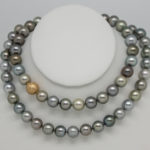
Opera Night
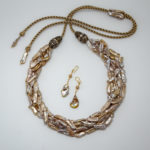
Shimmering Light
CONTACT: 520-906-7187
